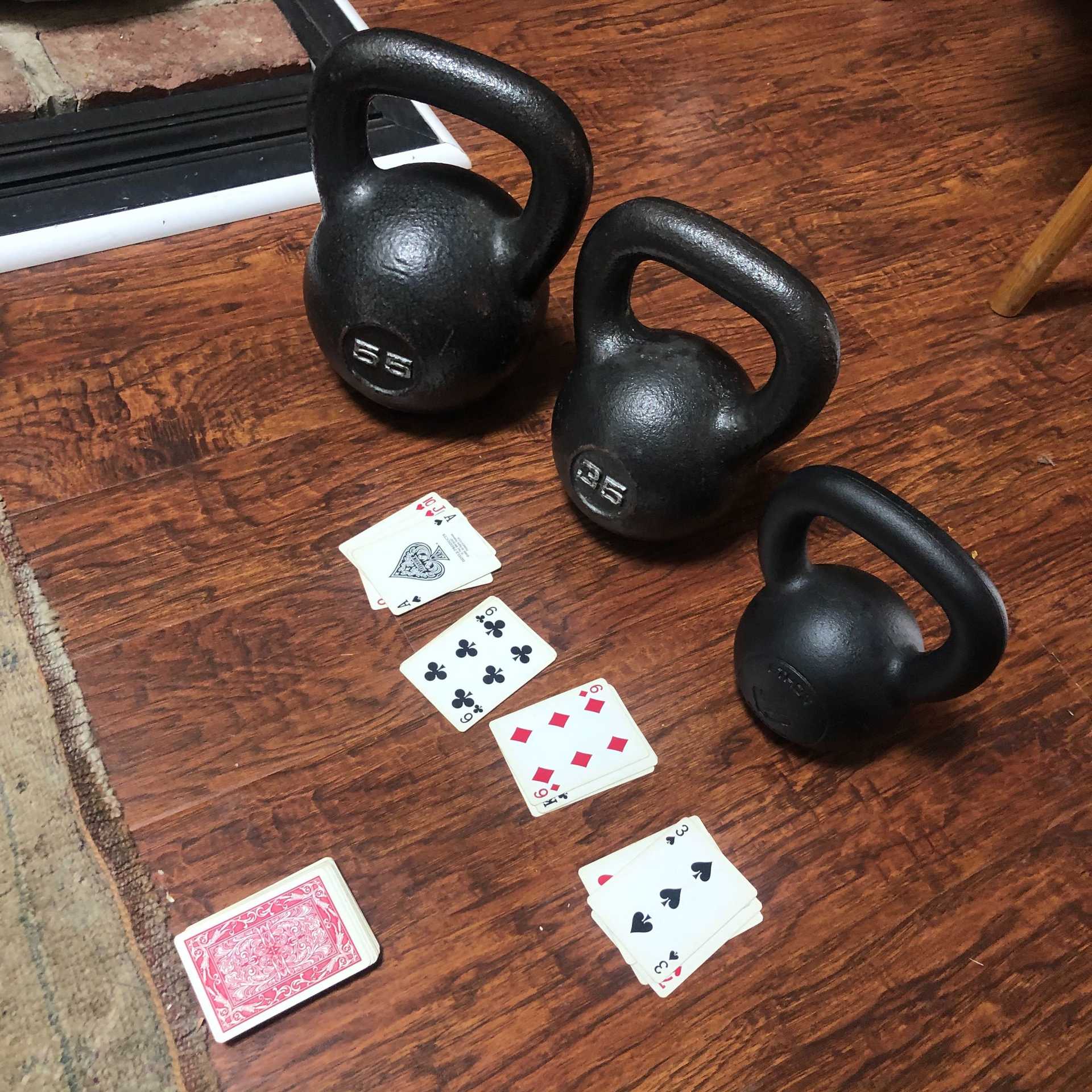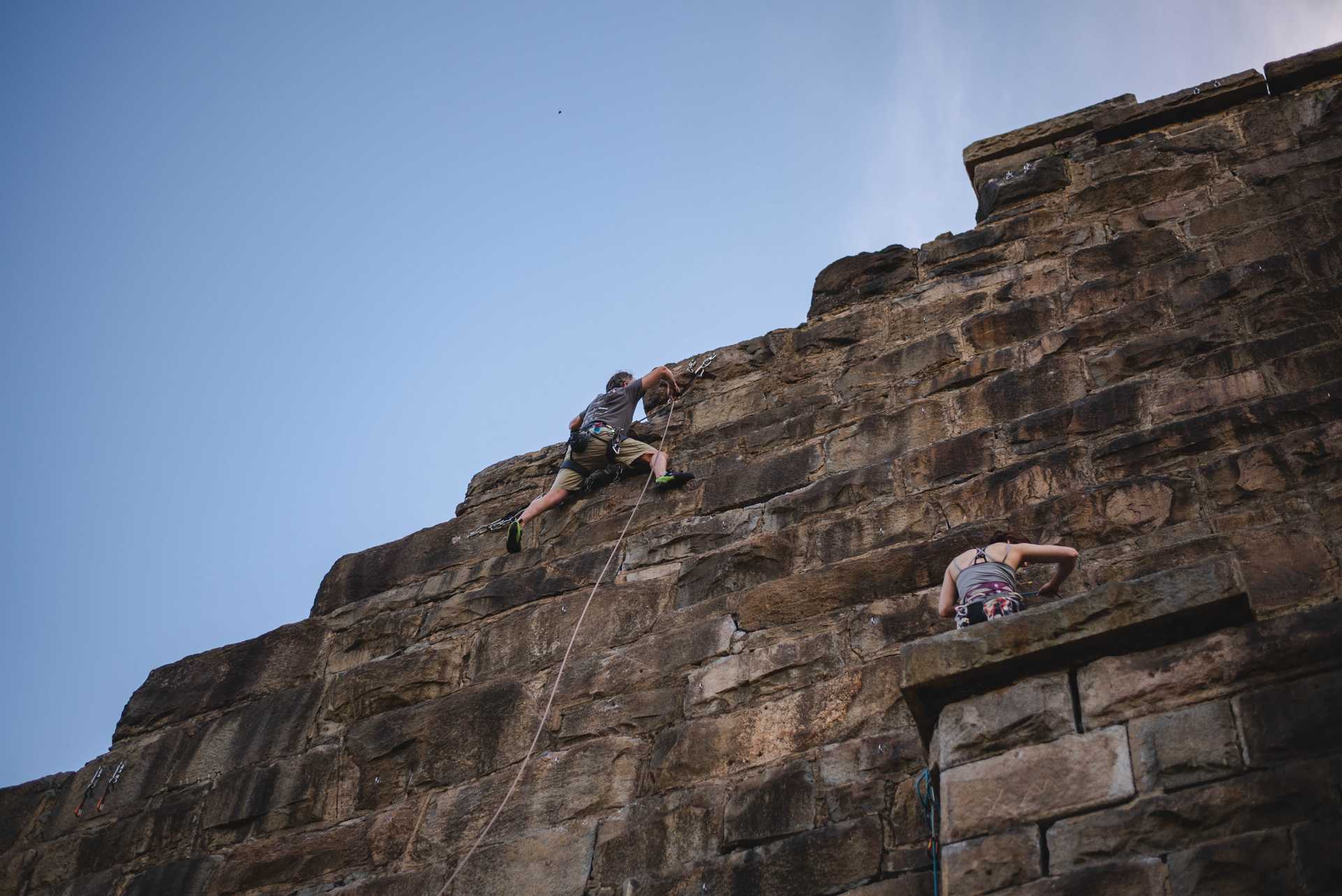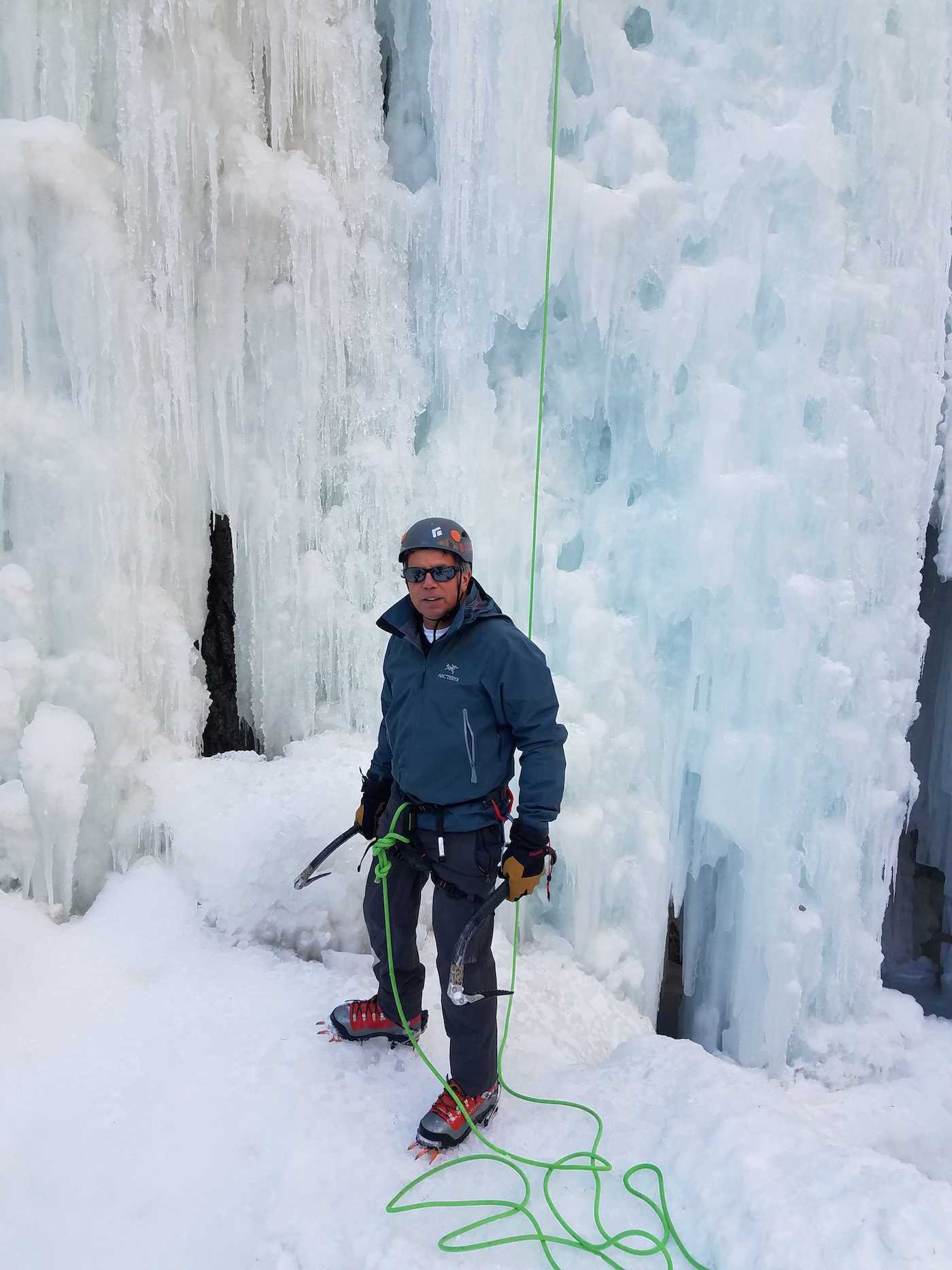The True Story of How Richmond's Manchester Wall was Rediscovered
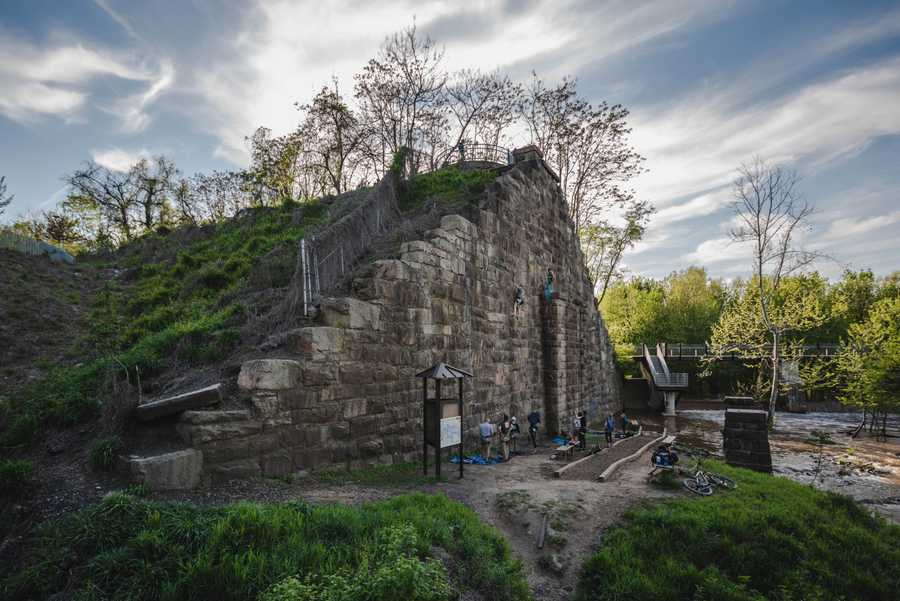
The Manchester Wall in Richmond, Virginia is a destination for climbers all throughout the region. It’s a great place for learning and building skills. Countless climbers learned to lead climb on First Pillar, and the wall face has many challenging routes that give even experienced climbers a tough time. But how did this gem come to be available to us? I had the great pleasure of sitting down with one of the original climbers that established the first-ever routes on the wall.
Jamie McGrath is a 65 year old Richmond native. He began climbing when he was 29 or 30 years old, he says, when a neighbor asked if he wanted to go with him to a climbing lesson at Alpine Outfitters. Jamie took him up on the offer, and was immediately hooked. He returned for more lessons, and soon got to a point where he and a group of friends were climbing together whenever they got the chance.
“The climbing community was so small, it was really only about six people. We kept a list of the climbers we knew, with their name and telephone number, and you know, what they could do.”
Jamie was part of a core group of climbers that climbed on Wednesdays. The group included, Les Newman, Ron Dawson and Rick Atkinson. Les, was “a bear” as Jamie puts it. He was roughly 195 lbs and 5 '10. “The way he would climb, he would just attack the wall.” And it was Les who had discovered a new place to climb, over on Brown’s Island. What is now a well-kept park and festival space in downtown Richmond with pedestrian paths and bridges crossing the canal was, back then, an overgrown lot. The canal was essentially a ditch, and there was a cedar snow fence in front of the riverbank. On the other side of the fence stood two pillars, each flanking an elevated stretch of railroad. It wasn’t inviting at all, and only the bravest of Richmonders would even try.
The pillars are the remnants of the Richmond-Petersburg Railroad bridge that dates back to before the American Civil War. Les noticed that the second pillar had these old rusty anchors on its east wall, so it could probably be lead-climbed. To get to the second pillar, a climber had to climb down the bank and shimmy along the base of the first pillar in the river. Then, either jump the gap, or (slightly) less daringly use the rope-swing to jump the gap to the base of the second pillar, all while carrying a pack of gear. From there, it was a quick shimmy around the base of the second pillar to the east wall, where there was a bit of actual land to stand on and set up a climb.
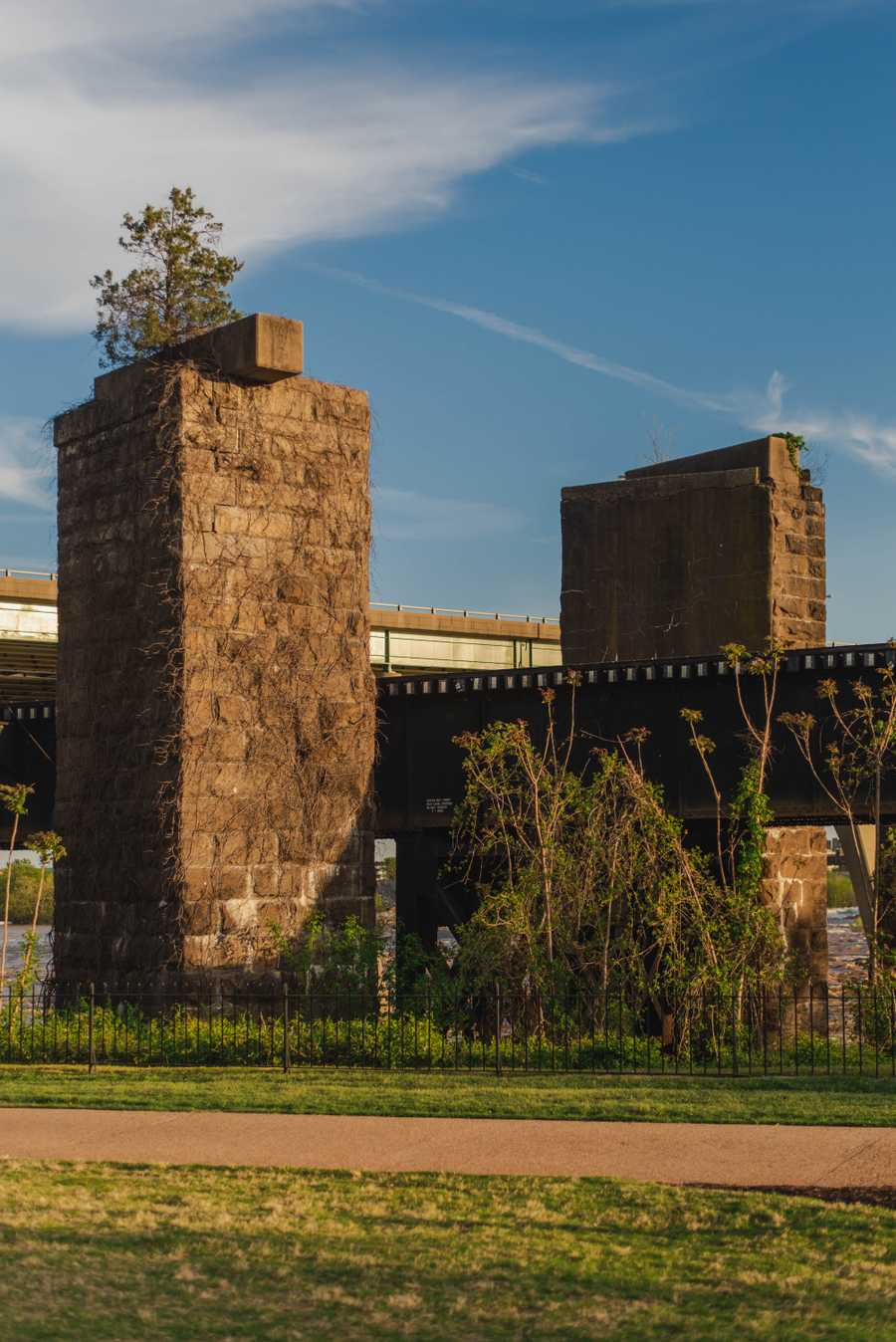
The large granite blocks offered no place to place gear, so traditional climbing was out. Les took the lead (pun intended) and climbed along the arete (corner, for flat-landers like me), using the rusty hangers. The hangers were probably left over from anchoring telegraph cables. The rest of the crew joked with Les, “if you die, we split your gear,” apparently a common saying within their supportive group. Les attacked the wall in his usual style, and thankfully made it to the top. He then set up an anchor and dropped a rope for so they could all top-rope climb the route.
Sport climbing was just becoming known in the area, and the crew would often read about developing trends from California. Les fashioned some anchor bolts out of old angle iron and aluminum and the crew returned to the pillar to establish a route. The anchors were about ¼ inch thick, but they went into the rock face only about ½ inch.
Bolting, the way they did it, is a grueling process. First, a climber has to lead climb to the top, which means climbing without a rope anchored at the top, and clipping their rope into anchors or gear along the way. After reaching the top, that same climber would set up a top rope so they can rappel down to anchor in the bolts. They bored into the wall using a twist drill, which meant pounding the drill in with a hammer, twisting and repeating. Each bolt took about thirty minutes.
After the eight or so bolts were set, They officially set the first ever bolted route in Richmond, VA! They declared it a 5.10, but Jamie thinks it would likely be classified a 5.11+ today. The group returned often to climb this route. They threaded a string through the anchors so that you could tie it to a rope and quickly set up a top rope without having to lead climb first. This upset someone who likely had a special affinity for the route, as one day Jamie found the string balled up by the pillar with an unsigned note. The message read, “This route is for lead climbing only. No top roping here.” The route has since been named “No Strings Attached.”
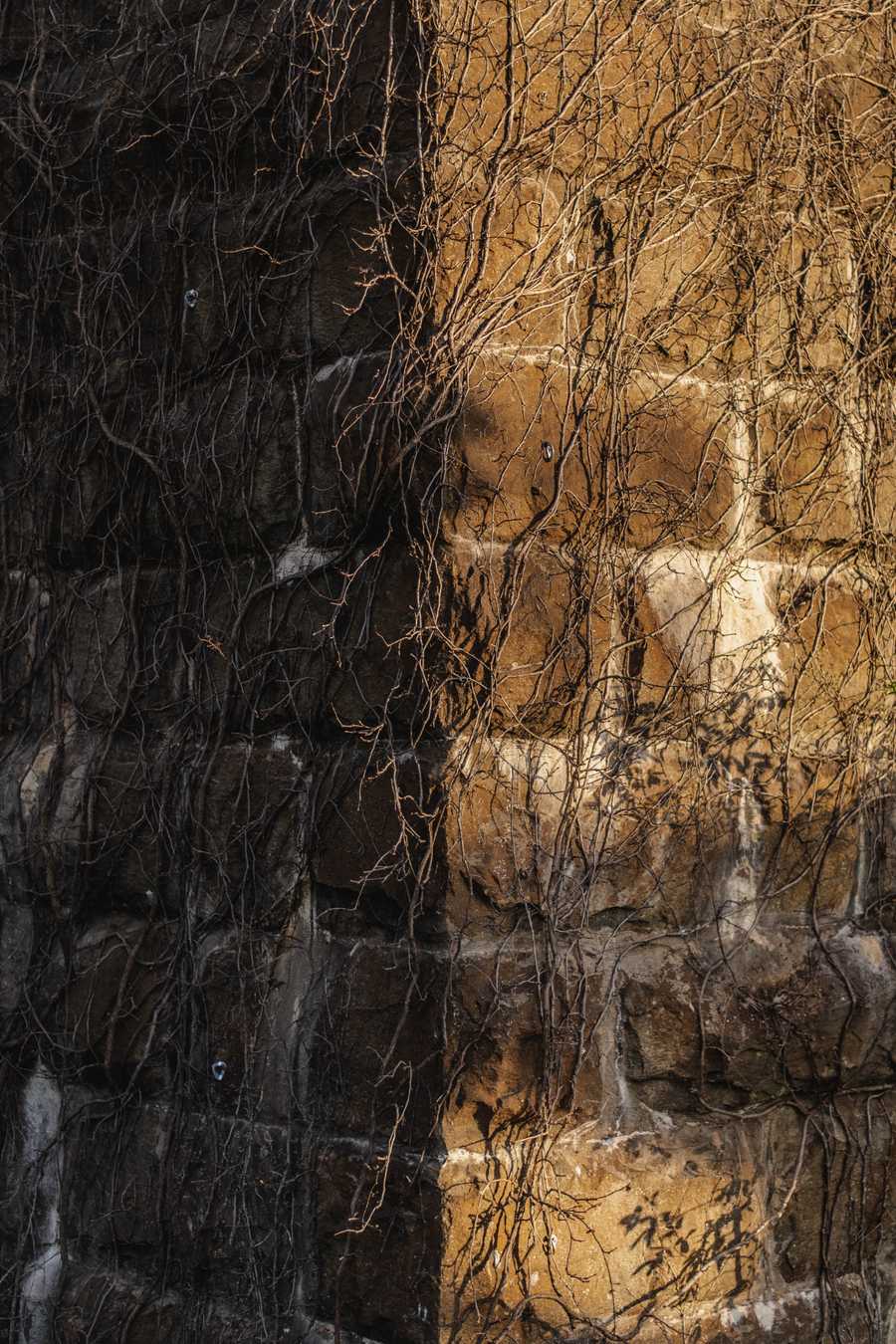
It was on this pillar, that they spotted the Manchester Wall. The climbers would often sit atop the pillar overlooking the James. Sometimes while eating a celebratory sandwich, or sometimes waving at conductors as a train trudged by. But, on a fateful day in 1981, atop the pillar and peering out across the river, they noticed a structure made of some familiar looking stones. The structure was almost completely covered with ivy, but they could make out its triangular shape, and its dark gray blocks were unmistakable. This is the moment that began the Manchester Wall’s evolution into the climbing hotspot it is today.
Read part two of this series, where we get into first climb on the wall itself!
